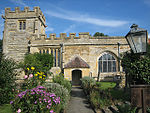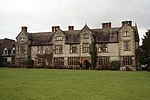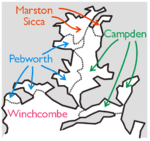Welford-on-Avon

Welford-on-Avon is a village situated some 4 miles (6 km) west-south-west of Stratford-upon-Avon in the county of Warwickshire, England. The population was measured at 1,420 in the 2011 census. Until 1931, Welford-on-Avon was in Gloucestershire (as part of the Rural District of Marston Sicca), when it was transferred to Stratford-on-Avon Rural District. Since 1974 it has been part of the Stratford-on-Avon District. Welford sits within a meander of the river Avon, on the south bank of the river. The village maypole is one of the tallest in England (at 65 feet / 20 metres). It used to be wooden but was replaced by an aluminium pole after a lightning strike. There are three pubs and many Tudor half-timbered and thatched cottages, mostly close to the village church, which is in the oldest part of Welford. Historically there were two railway station within two miles of the centre of the village, Binton (1885-1949) and Milcote (1859-1966).
Excerpt from the Wikipedia article Welford-on-Avon (License: CC BY-SA 3.0, Authors, Images).Welford-on-Avon
Binton Road, Stratford-on-Avon
Geographical coordinates (GPS) Address Nearby Places Show on map
Geographical coordinates (GPS)
| Latitude | Longitude |
|---|---|
| N 52.168 ° | E -1.784 ° |
Address
Binton Road
Binton Road
CV37 8EB Stratford-on-Avon
England, United Kingdom
Open on Google Maps








